Pablo Serrano (Crivillén, Teruel, 1908 - Madrid, 1985), 20th-century Spanish artist, left the imprint of his art in many cities around the world. In Zaragoza, the capital ofAragon, his artistic contribution was particularly significant: on either side of City Hall are two of his sculptures; on the façade of the Basilica del Pilar, one of Spain’s most revered shrines, is the large relief La Venuta della Virgen del Pilar. However, it is at the museum dedicated to him, IAACC Pablo Serrano(Instituto Aragonés de Arte y Cultura Contemporáneos), that his production can be admired in all its facets. The monographic museum itself is a special architectural work, characterized by its imposing geometric volumes and the refined finish of the metal plates lacquered in shades of blue and black, and offers a striking rooftop terrace from which one can admire the Zaragoza skyline while enjoying cocktails and contemporary cuisine. Therefore, to discover Serrano’s works in the city, we propose an itinerary to discover the artist’s most famous works.
The Plaza de Nuestra Señora del Pilar in Zaragoza is one of the busiest places in the Aragonese city. Also known as Plaza de las Catedrales, it owes its name to the imposing presence of the two cathedrals that overlook it: the Basilica of Our Lady of Pilar and the Cathedral of the Savior. In the center of the main facade of the Basilica of Our Lady of Pilar is the work Venida de la Virgen del Pilar, created in 1969 by Pablo Serrano. This work is a relief framed by two columns of Corinthian order, under an elegant semicircular arch and depicts the sacred moment of the coming of the Virgin of Pilar. The figures of the converts, featured in the altarpiece, emerge thanks to the Neo-Cubist treatment of volumes and chiaroscuro effects. In the work, spaces are distributed similarly to the composition of The Burial of the Count of Orgaz, with a clear separation between the earthly and heavenly zones, represented by a series of heads arranged next to each other. The entire composition is elegantly framed by a semicircular arch, also reminiscent of El Greco’s style.
On the facade of the town hall are two other sculptures created by Serrano: Ángel de la ciudad and San Valero from 1965. During the final phase of construction of the new municipality, Mayor Gómez Laguna decided to commission the artist to create two imposing monumental figures to adorn the main door of the new building. Initially it was planned to represent Ángel Custodio (1965) and San Jorge, but in the end they opted for Ángel de la ciudad and replaced San Jorge with the figure of San Valero, bishop and patron saint of Zaragoza. In addition, at Serrano’s own suggestion, it was decided to make the sculptures in bronze instead of stone to ensure greater durability and a more sober appearance on the facade. Ángel de la ciudad, dedicated to the Angel of the same name who gives his name to the gate in front of the Piedra Bridge, is one of Serrano’s most significant works of the 1960s. This sculpture effectively combines two relatively opposite but complementary elements: a closed, angular block, furrowed by a vertical void that suggests welcome, and the gentle, serene features of the Angel’s face, which draws attention to his protective hands and watchful gesture toward the future. Both works, with strong plasticity and an interplay of deep hollows and solid blocks, symbolize the spiritual relevance of the figures they represent.
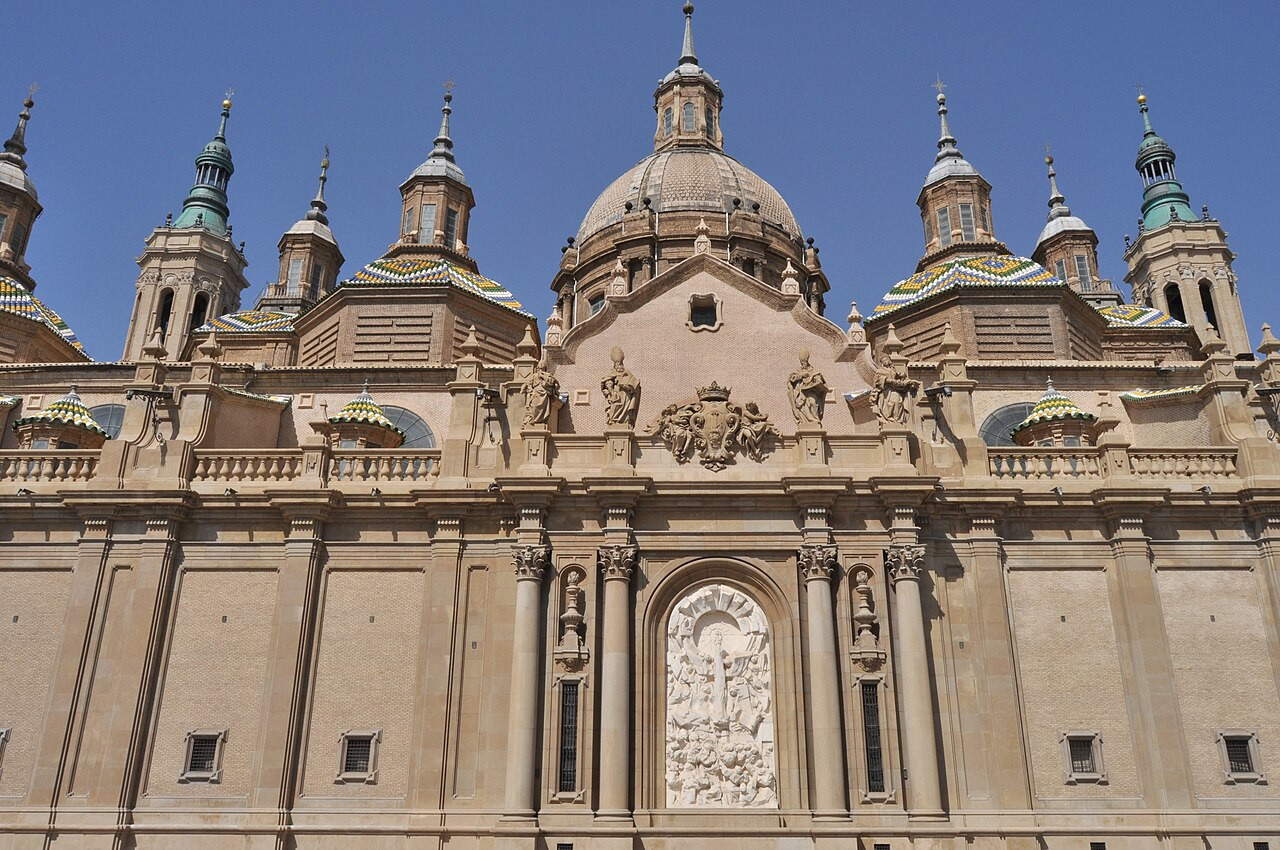
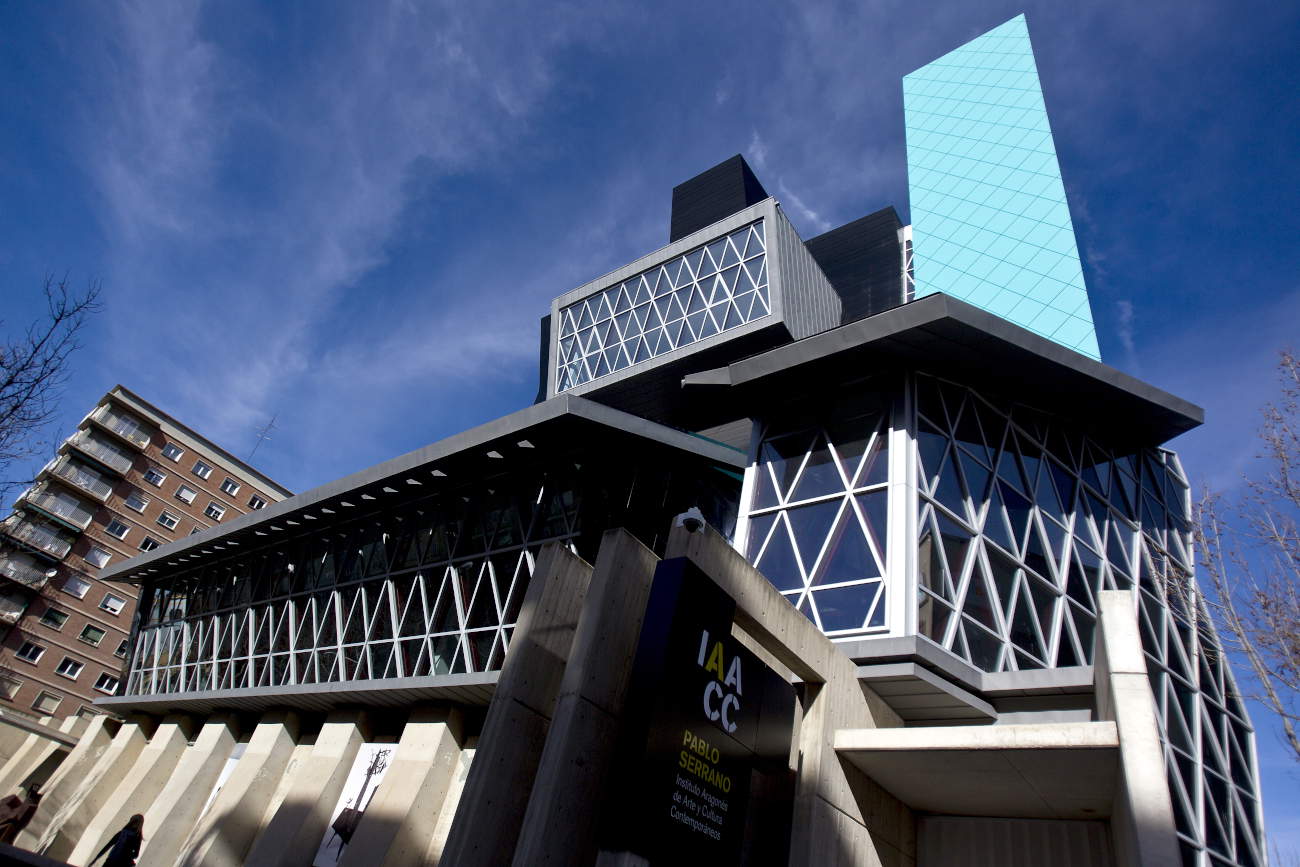
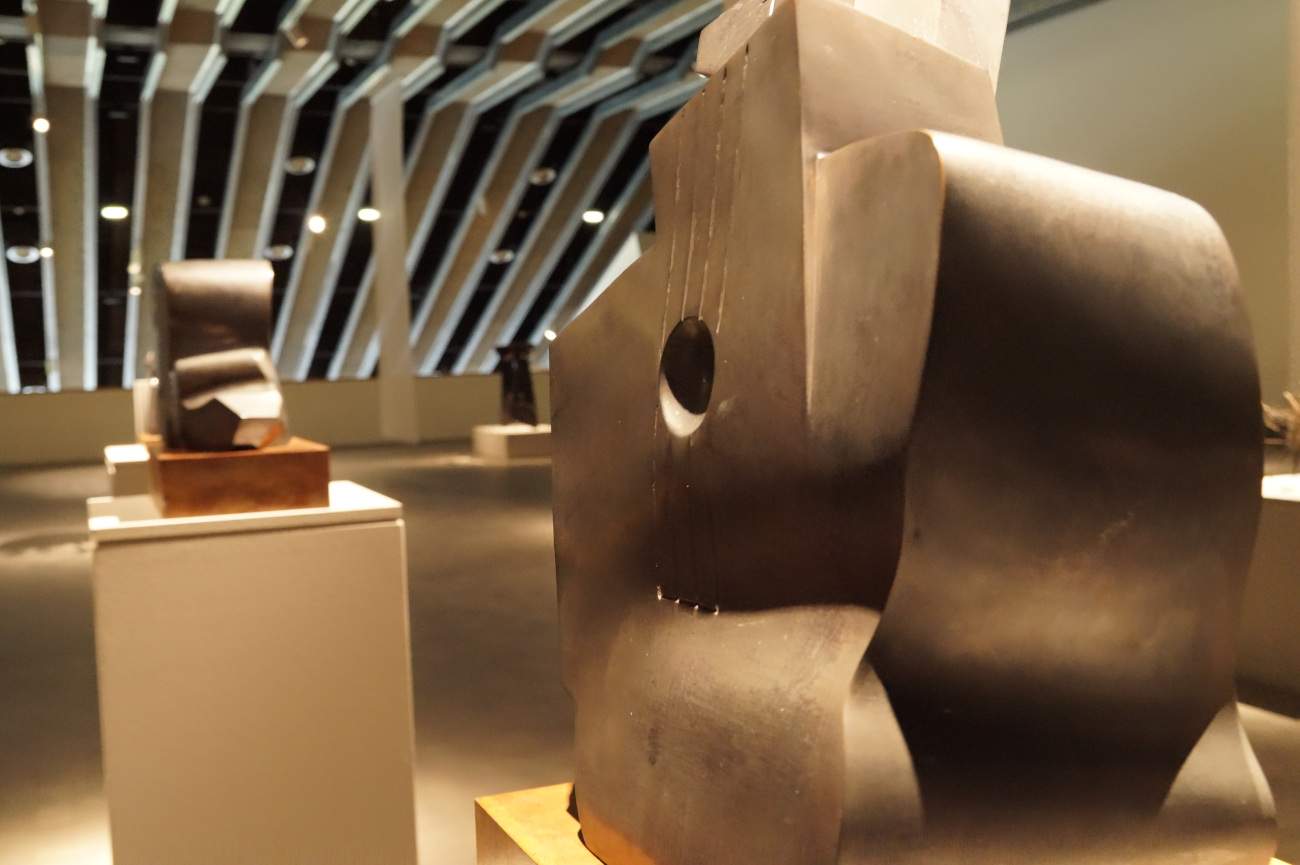
Like Ángel de la ciudad, a figure that shares origin and location dedicated to the patron saint of Zaragoza, the depiction of San Valero follows the volumetric and compositional principles developed by Serrano in his large monumental commissions of the 1960s. This work is characterized by the union of robust and sometimes almost magmatic formal masses, which form the basic structure for identifying the character represented. However, the fundamental element that distinguishes and gives character to the protagonist is the head, and often also the hands. This is evident in the San Valero, whose anatomy is outlined imprecisely and compactly, except for the voids that suggest an almost rock-like structure. However, the head is vividly and penetratingly rendered, while the hands express an admonishing vigor with gestures that recall the prophetic visions of the Baruch, an earlier work by Serrano, and even earlier to the Great Prophet, a work by Aragonese artist Pablo Gargallo.
In 2017, theAragonese Institute of Contemporary Art and Culture(IAACC) in Zaragoza opened a new permanent exhibition dedicated to Serrano, renewing the museum’s artistic landscape. This event marked the arrival of new works in the permanent display and a renewal of the exhibition itinerary, aiming to offer a more complete and in-depth view of the artist’s vast career. Starting with his figurative works, the exhibition itinerary winds through the artist’s most significant series, such as Hierros, Quema del objeto, Ritmos en el espacio, and Hombres con puerta, to name a few. A focal point of the 1960s is the series Bóvedas para el Hombre, characterized by concave and irregular structures that recall the image of caves. The works, including 23 exhibited at the XXXI International Exhibition of the Venice Biennale in 1962, symbolize the sculptor’s focus on man and his existence. Pablo Serrano’s works have continued to evolve steadily throughout his career, as the artist has always aimed to reflect on the idea, the object and the creative process itself. Sculpture and drawing have represented for him not only means of expression, but true philosophical tools to communicate his concerns about humanity, conveying emotions and stimulating communication with the audience.
Moving inside the sculptor’s monographic museum, theIAACC Pablo Serrano, in the city of Zaragoza it is possible to find the permanent display of the artist’s works. Among them is Taurus from 1949, a work that represents a radical change of direction for Pablo Serrano, who moved away from the more traditional models of figuration. It belongsto the Toros series, the designs for which were conceived in Montevideo and most of the works were cast after the sculptor moved to Spain in 1955. In this sculpture, Serrano completely simplifies the form of the bull, reducing it to a prismatic block with the intention of capturing the very essence of the animal. The work highlights Serrano’s mastery of schematization and geometrization of forms, representing a significant step toward abstraction. This approach calls to mind the formal simplification of the figure of the bull created by Pablo Picasso in a series of 11 lithographs in 1945. Serrano would take up the bull theme again between 1970 and 1973, creating several additional minor editions, thus consolidating his contribution to the representation of this iconic symbol in the history of modern art.
Also within the collection is the 1962 work Hombres-Bóveda, which represents an evolution of Bóvedas Para el Hombre, begun before 1960. This work testifies to Pablo Serrano’s earlier reflections on the human being and the concept of shelter, now leading him to contemplate the union of two fundamental concepts: the individual and space. In creating this sculpture, Serrano used a process that involved first kneading clay and then casting bronze. His intent was to clearly differentiate two distinct spaces: the exterior, represented as mortal, raw and wild, resembling a human torso, and the interior, bright and shining, characterized by the polished metal, representing the spirit, the soul, and where light resides. The latter is an illuminating metaphor for what dwells within every man and woman. With this work, Serrano offers a profound reflection on the duality of the human being, exploring the complexity of his or her nature and relationship with the space that surrounds him or her, making visible the inside and the outside, the material and the immaterial, in an artistic expression that invites contemplation and reflection on the human condition.
Quema del Objeto, also featured in the permanent exhibition, belongs to the series of the same name and was conceived by Serrano between 1957 and 1959 and then later taken up by the artist in the mid-1970s. The series, which explores the theme of the burning monument, stands out for its interpretation of space, both conceptually and in the field of visual art, by investigating the meaning of the emptiness that remains after a space has been cleared. Serrano gives this reflection a metaphysical dimension, which speaks of the “presence of absence.” One of the techniques used to convey this concept involved the creation of a sculpture containing within it a wooden or cardboard heart, destined to disappear after the sculpture was burned as part of a public event. This spectacle became popular in the 1970s, when the first fiery monuments were made, accompanied by these particular events. The cube-shaped design, supported by a tripod, is one of the forms Serrano used to create the monuments installed in several locations, including Alcañiz, the outdoor Museo de Arte Contemporáneo in Aracena, and the hall of the Nicolás Salmerón Cultural Center in Madrid. These works not only embody the concept of Quema del Objeto, but also serve as a testimony to Pablo Serrano’s conceptual audacity and artistic expressiveness, which has challenged traditional conventions to create a dialogue between the material and the ephemeral, between the present and the absent, and between art and the viewer.
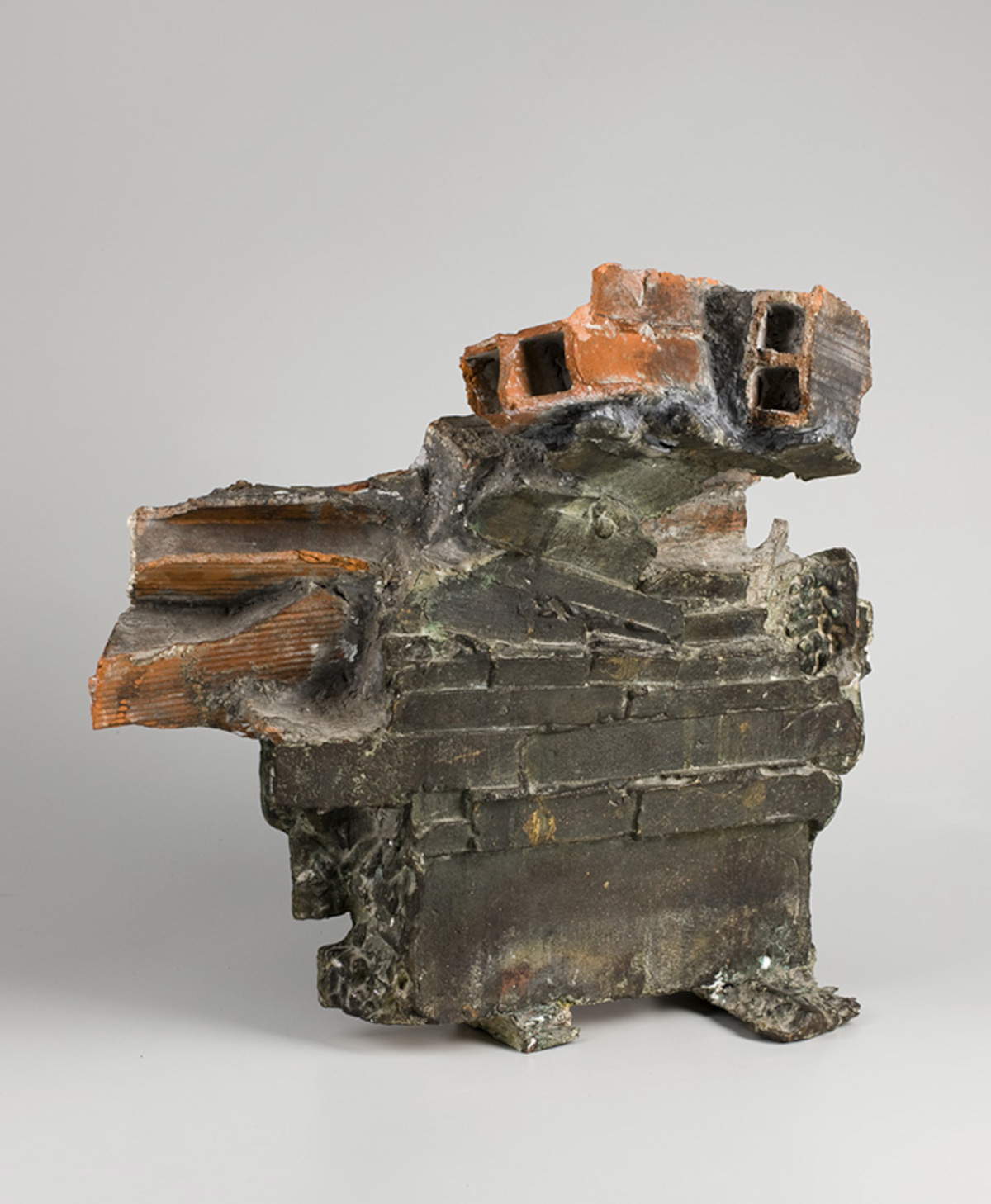
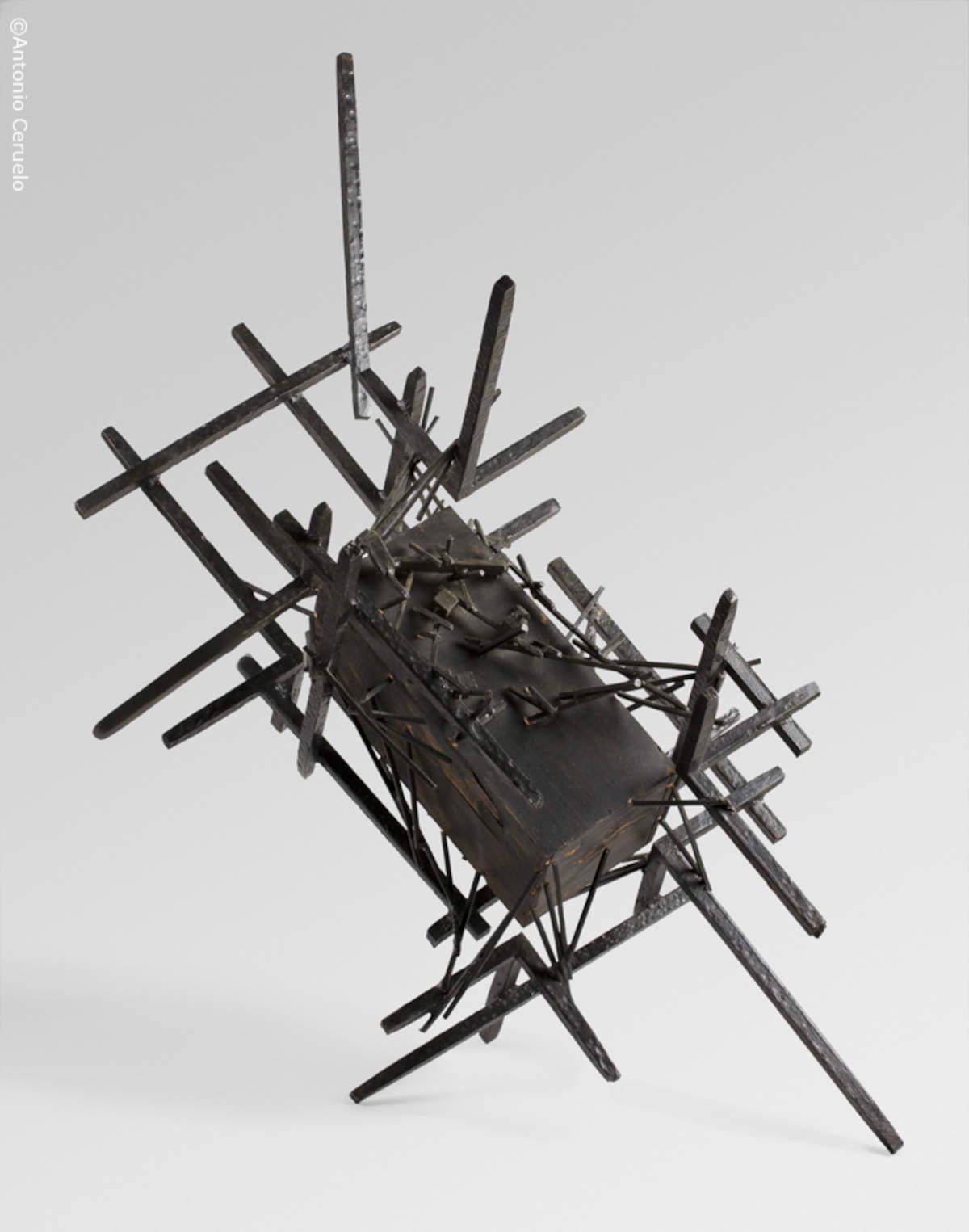
Unidad-Yunta, from 1973, which is in theIAACC Pablo Serrano collection, incorporates two separate volumes arranged in front of each other. The front faces of these volumes create profiles that complement each other when they come together, thus symbolizing mutual communication. However, although the concept of unity is represented symbolically, both sides are anchored at the base, preventing them from physically joining. Serrano applies a different finish to the materials that has special meaning within the series. He reserves a more delicate treatment for the burnished bronze of the front faces, where communication takes place, while he leaves the outer part with a rough finish and a dark patina, creating a contrast with the brightness of the inner face. Forms joined through interior spaces that fit and compress into each other can integrate into a community or remain distinct individuals. The work therefore embodies the complexity of human relationships and the potential for connection and communication that exists between individuals, while respecting their individuality and integrity.
In the period between 1957 and 1959, when the artist was also working on the Quemas, he created Drama del Objeto, now on display at the IAACC Pablo Serrano Museum. In the work, the artist reflects on space with a strongly expressionist artistic approach. The resulting sculpture consists of a brass cube with an open side, where three faces show tears that allow one to observe the interior. Metal bars emerge from this interior space, projecting main lines into the void, thus delineating the geometric body of the work. Drama del Objeto thus represents an exploration of the interaction between form and space, with an intense expressive charge resulting from the use of materials and the arrangement of lines and forms. Serrano challenges the traditional concept of sculpture, creating a work that evokes a sensation of movement and tension, inviting the viewer to reflect on the meaning and perception of space in the artistic realm.
The 1954 work Muchacho al Sol represents a smaller version of the sculpture Sol that Pablo Serrano presented at the III Bienal Hispanoamericana de Arte in Barcelona in 1955, at which he represented Uruguay. In this exhibition, Serrano received the Grand Prize for Sculpture ex aequo with Angel Ferrant. This work marks a significant moment in Serrano’s artistic evolution, as it introduced the expressionist language into his sculpture. This occurred in the years prior to his return to Spain in 1955, after more than two decades spent on the American continent. It was during this period that Serrano began to distinguish himself as a renowned artist, consolidating his reputation through awards and institutional commissions. Muchacho al Sol thus represents an important turning point in the artist’s career, marking the beginning of his rise in the artistic sphere and his establishment as one of the great sculptors of his time.
 |
| In Zaragoza on the trail of Pablo Serrano, Spanish sculptor of the 20th century |
Warning: the translation into English of the original Italian article was created using automatic tools. We undertake to review all articles, but we do not guarantee the total absence of inaccuracies in the translation due to the program. You can find the original by clicking on the ITA button. If you find any mistake,please contact us.